Once Upon A Time in Latin America (18-2) Easter Island. The World of the MOAI
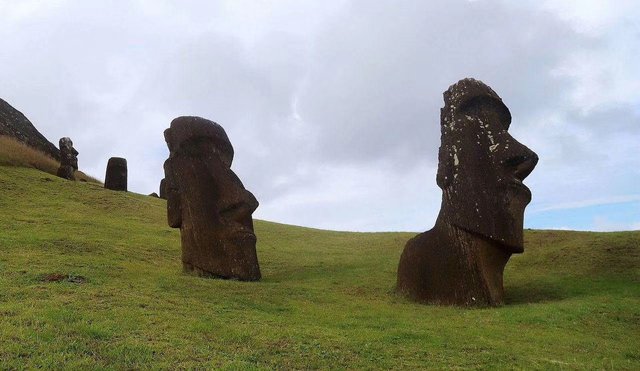
Then it was Tongariki, the largest moai group on Easter Island. Fifteen Moai statues were back to the sea, facing the Rano Raraku volcanic quarry where they were born. This is the landmark of Easter Island, silently depicting the history of the island.
I parked my car and walked into the scenic area. On the east side the short wall. Near the gap, the first thing I saw was a MOAI guarding independently. This stone statue was called "Traveling Moai" because he once flew to Japan, exhibited in Osaka, and after returning, he was placed here upright as a gatekeeper.
The reason for its going abroad was that there were once more than 30 Moai here, but they were fragmented by war and a tsunami in 1950. Around 1990, the Japanese helped them repair to be what they were now. To thank the Japanese, for the first and only time, they agreed to let a Moai go abroad for an exhibition.
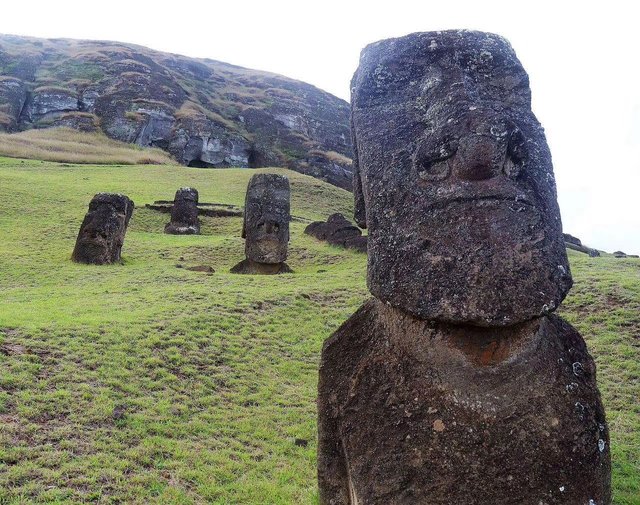
Saw from "raveling Moai", the view was a bit shocking. On the right side, there was the borderless Pacific Ocean, and a row of MOAI statues was on the coast. The 15 MOAI statues were in different sizes and different looks. You could see the tall and thin shapes in this MOAI Statues. The highest MOAI was around 10 meters, and the shortest one was at least 5 or 6 meters, and the average weight was 40 tons. Therefore, how to carry them from the quarry in the Stone Age was also a historical mystery.
The axis of the base of the stone statue was exactly perpendicular to the trajectory of the sun on the Summer Solstice. Therefore, on that day, the MOAI Statues were back to the eastern sunrise and facing the western afterglow. Therefore, no matter what season here was the best place to watch the sunrise. In the sunrises from the distant Pacific Ocean, and the rays of light penetrate through the gap between the stone statues, emitting golden lines. According to the seasons, the early sun would glow on the side of different MOAI.
MOAI Statues had long heads, deep eye sockets, high noses, protruding chins, and long ears. They had no feet, their arms hang down on their sides, and their hands were on their belly. These stone statues were carved from volcanic stones, and some were a few meters tall with hats and shaped like columns. Some stone statues were also engraved with symbols, a bit like tattoo designs.
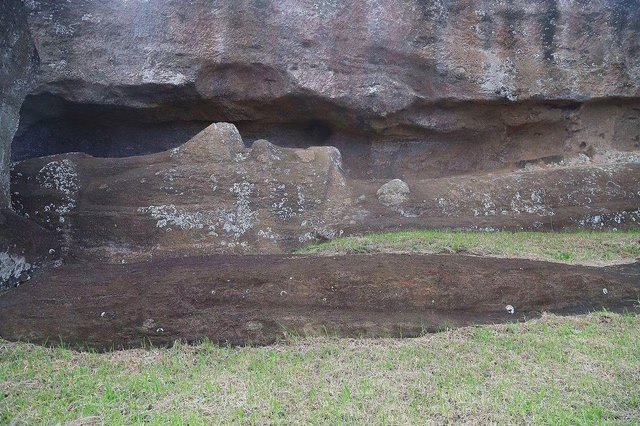
It was said that MOAIs which had long ears were from the east on Easter Island. After them, MOAI Statues with short ears came from the west. This legend reminds us that the earliest settlers came from Latin America before the Inca. It was now known that people there always stretched their ears. Later came the Polynesians who overthrew those long ear man who had been deceived by religion and had stolen their hearts.
On April 5, 1722, the Dutch admiral Jacob Rogwen sailed past this place and found the island again. Because that day happened to be Jesus Easter, it was named "Easter Island". This has been used since then.
From 1805, Western colonists began to capture Rapa Nui on the island as slaves. At first, it was only occasionally. In 1862, Peruvian pirates came by eight ships and captured more than a thousand Rapa Nui. The male Rapa Nui was almost wiped out. These people were transported to Peru and sold to Peru local slave owners.
Under the condemnation of international public opinion, the Peruvian government had to order slave traders to return these Rapa Nui, but Rapa Nui had most died and only about 100 people survived. On the way back to Easter Island, some of them were infected with smallpox and died of illness during the trip. Only 15 Rapa Nui returned to his hometown. The 15 survivors also brought smallpox to Easter Island.
The last descendants of the legendary founder, the chief of the tribe Hotu Matu'a, died. All chiefs and priests died. Only a few hundred people remained on the island. The next year, French missionaries set foot on Easter Island, easily transformed the Rapa Nui people in the disaster to Christians, and also destroyed the island's culture. Just as the Spanish burned down the Mayan script books, they ordered the burning of all wooden boards engraved with the local script Langerange. The survived 25 Langer Lange boards were secretly hidden by the Rapa Nui. The words written on the wooden board were written from left to right on the first line and from right to left on the next line. Write down in a different direction. As for the meaning of these pictographs, it is a mystery.
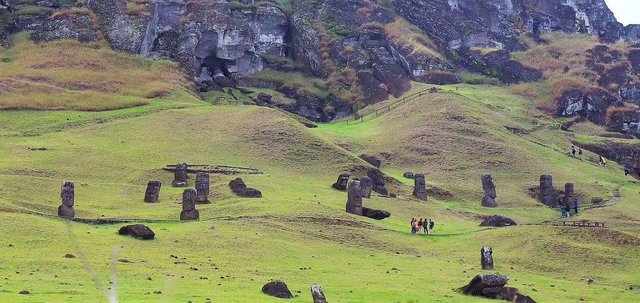
I took many pictures with these two intricate mysteries. A young Japanese couple was posing in front of the MOAI Statues. They saw my wide-angle shooting, the man was more hard-working performance, and the kimono girl was smiling like flowers trembling. They were adding beautiful color to the gray speechless MOAI.
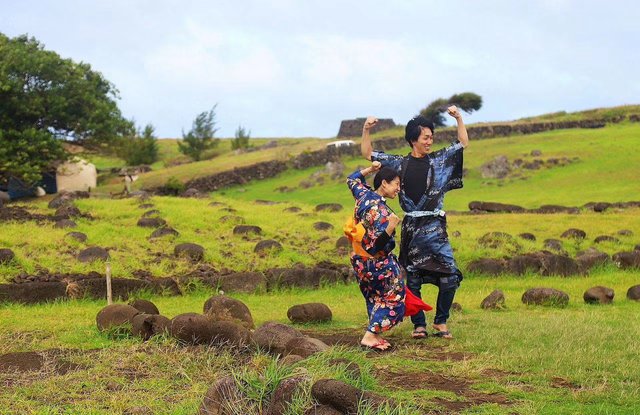
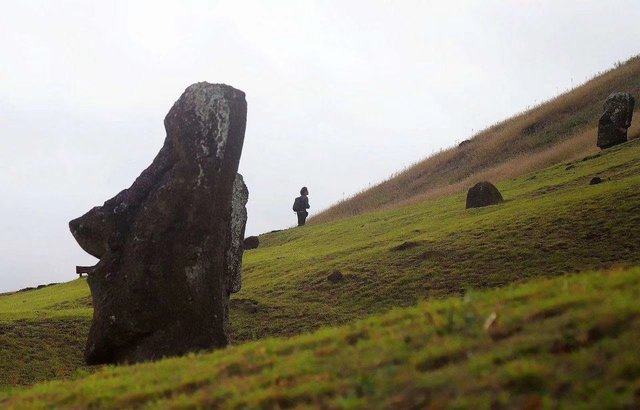
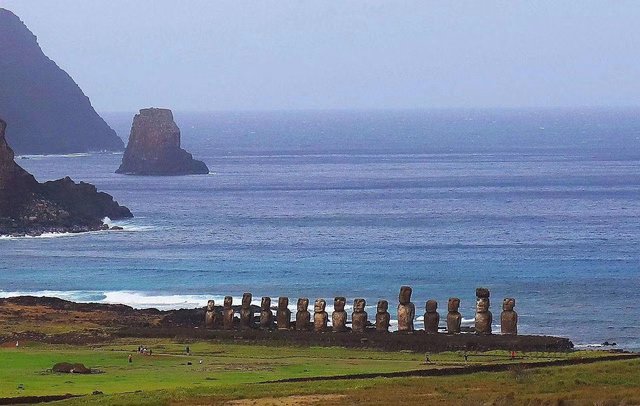
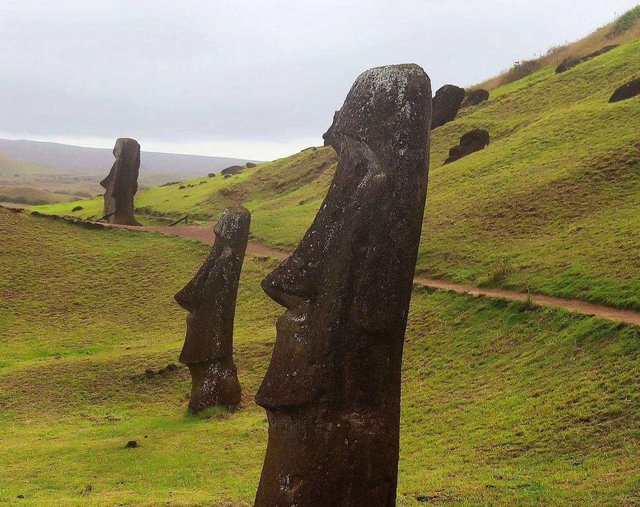
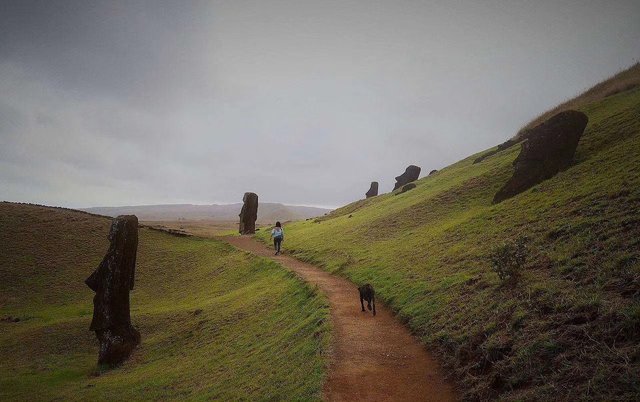
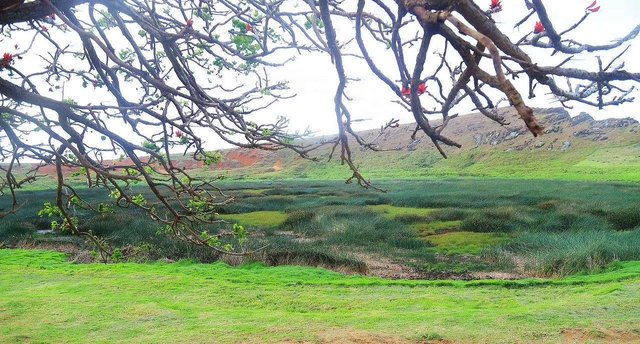
Congratulations @nectarla! You have completed the following achievement on the Steem blockchain and have been rewarded with new badge(s) :
You can view your badges on your Steem Board and compare to others on the Steem Ranking
If you no longer want to receive notifications, reply to this comment with the word
STOPTo support your work, I also upvoted your post!